Results 4,821 to 4,830 of 12096
Thread: Anandtech News
-
03-09-15, 05:30 PM #4821
Anandtech: Google Releases Android 5.1
Today Google has announced the release of Android 5.1 Lollipop. The update is said to improve both performance and stability, as well as including a few new features.
The first feature is official support for multiple SIM cards. This feature is likely to appeal to Android users in emerging markets, and will definitely help Google's Android One initiative. Another new feature is support for HD voice calls on compatible networks and devices, with both T-Mobile and Verizon supporting the feature on the Nexus 6. Google has also added the ability to join WiFi networks and pair Bluetooth devices right from the quick settings menu.
In addition to the above improvements, Android 5.1 has one more notable feature, it's called Device Protection. Similar to Apple's Activation Lock, Device Protection means that a device will remain locked until the owner signs in with their Google account. This lock persists even after a factory reset, which should hopefully make stealing Android smartphones a pointless endeavor for thieves. Police departments in some US cities reported significant reductions in iPhone theft after the release of Activation Lock, and it would be great to see the same thing happen with Android devices.
Android 5.1 Lollipop will be rolling out to Nexus and Google Play edition devices in the near future.
More...
-
03-09-15, 07:30 PM #4822
Anandtech: Intel Xeon D Launched: 14nm Broadwell SoC for Enterprise
It is very rare for Intel to come out and announce a new integrated platform. Today this comes in the form of Xeon D, best described as the meeting in the middle between Xeon E3 and Atom SoCs, taking the best bits of both and fitting into the market for the low-end server market prioritizing efficiency and networking. Xeon D, also known as Broadwell-DE, combines up to eight high performance Broadwell desktop cores and the PCH onto a single die, reduces both down to 14 nm for power consumption/die area and offers an array of server features normally found with the Xeon/Avoton line. This is being labeled as the first proper Intel Xeon SoC platform.
This is the slide currently doing the rounds from Intel’s pre-briefings on Xeon D. This is showing the current top of the line Xeon D-1540, giving eight Broadwell cores for a total of sixteen threads. Each core has access to 32KB/32KB of L1 cache, similar to Xeon E3 v3, as well as 256KB of L2 and 1.5 MB of L3 per core. The SoC supports both DDR3L and DDR4 controllers, with memory compatibility listed as 64GB in UDIMM and 128GB in RDIMM – both ECC and non-ECC is supported.
Note that the DRAM is limited to four DIMMs per CPU, which means two channels at 2 DIMMs per channel, rather than anything quad channel which remains the realm of the Xeon E5 v3 line. Also the limitations of 64GB/128GB in UDIMM/RDIMM are for DDR4 only – I might expect the DDR3L limits to be half that unless Intel has fixed the issue with supporting 16GB DDR3 UDIMMs on non-Atom platforms.
The core arrangement will be in a ring rather than a crossbar, as this tends to be where Intel’s strengths lie when it comes to processor design:
The SoC will have 24 PCIe lanes, up from 16 on the Xeon E3 v3 range. This is normally supported as x16/x8, although can be split into x4/x4/x4/x4/x4/x4 depending on the features required on the platform. The integrated IO hub also has bandwidth for eight lanes of PCIe 2.0 which will support eight separate x1 devices, such as ASPEED controllers, Ethernet or more storage.
Speaking of networking, the SoC will have bandwidth for two 10GbE connections direct, which will work both in 1G and 2.5G modes. These are optimized for virtualization, allowing 128 Tx and Rx queues per port as well as SR-IOV and VMDq enhancements. With the integration on board, driver support should also be easier to manage rather than external controller solutions.
Adding in the Ethernet onto the SoC is rather interesting because the SoC is rated at a 45W TDP. Normally a server chipset is rated for around 13W, with 10G Ethernet at 7-13W. Thus even the additions of storage and networking can come to 20W, leaving 25W for the cores themselves. As a result, the cores are clocked at 2.0 GHz base for the 8-core D-1540, and 2.2 GHz for the 4-core D-1520. Both SKUs will turbo up to 2.5 GHz when needed.
The SoC also supports the more common server and enterprise aspects normally associated with this product range – virtualization, separate external system control and RAS (reliability, availability and serviceability).
The RAS features are a big jump up from the Atom C2000 range, although there are one or two missing relating to memory from the Xeon E5 v3 counterparts.
Intel is placing some interesting claims on performance, specifically 3.4x better performance of the high end SKU compared to the Atom C2750 (eight core Silvermont) and 1.7x better performance per watt. Breaking down these comparisons, we have Silvermont against Broadwell which has a significant difference in architecture, and then an eight-core/eight-thread C2750 against the eight-core/sixteen-thread D-1540, which should improve the performance when software can take advantage of the threading. The performance per watt should have been expected moving from 22nm Silvermont to 14nm Broadwell. Bundle these in together, and the 3.4x / 1.7x numbers seem a reasonable comparison. The more poignant number perhaps is the 5.5% IPC increase over Haswell due to microarchitecture improvements:
What Xeon D also brings to the table is the fixed silicon for Transactional Synchronized Extensions (TSX) that were disabled due to an obscure bug found in the middle of last year. This is combined with full AVX 2.0 support, dual FMA and AES-NI instructions.
The other element of the equation is power, with Xeon D implementing Hardware Power States – a function that allows the hardware to adjust performance depending on core metrics independent of the operating system functionality. This allows for quicker load-to-idle times by probing the CPU at a level that might not be possible in software, as well as varying the function depending on loading and power consumption to a higher rate of granularity on the fly.
Xeon D is aimed at the ‘Data Center Edge’ for the start of 2015, moving into the ‘Networking Edge’ during the second half of the year. These edge-case scenarios are meant to tackle a region where sometimes the C2750 line was not powerful enough, or the Xeon E3 line was not as cost effective as could be – Xeon D aims to satisfy both sides of the equation.
IoT related implementations are being considered, again for the second half of the year. We probed Intel on the likelihood of seeing any consumer oriented implementations of such a platform, and although they recognized that there might be some niche situations they had not considered where Xeon D might be appropriate, they were being bullish on actually aiming anything at the consumer. Xeon D is purely an enterprise play. That being said, so was the Atom C2750, but it made its way into the hands of the consumer via products such as ASRock Rack’s C2750D4I which we reviewed last year.
Current indications of products coming to market are by way of ASRock and also Supermicro. Patrick at ServeTheHome caught these two in his sights:
The ASRock Rack D1540D4X is a server build, as shown by the limited power delivery as well as the storage and PCIe arrangement. Networking is via a selected PHY card, supporting either dual 10GBase-T or SFP+. ASRock Rack is showing this setup at CeBIT, hopefully in action.
The SuperMicro X10SDV-TLN4F comes in a regular mini-ITX form factor, supporting dual 10GBase-T along with two I350-AM2 GbE ports and IPMI 2.0 with KVM. The PCIe lanes of Xeon D come into effect here, giving a PCIe 3.0 x4 M.2 slot for 2242 and 2280 sized M.2 storage cards.
Estimated prices for the motherboards put them in the $800-$1000 bracket with the CPU, perhaps matching or besting the equivalent Avoton platform + X540-T2 bundling. Interestingly Patrick also caught wind that Tyan is not going to play in this market, with no products planned.
Despite the official launch today, we are more likely to see product available in volume in April, although a few select partners might be able to ask their regular distributors about testing today. Both Johan and I are looking into sampling a few of these for AnandTech reviews, so stay tuned for those. We have some deeper information on the architecture to pour through between now and then which we will go into for the reviews. Johan recently compared the Xeon E3 v3, Atom C2000 and X-Gene 1 platforms, to which Xeon D is another piece of the puzzle.
Source: Intel, ServeTheHome
More...
-
03-10-15, 07:30 AM #4823
Anandtech: Marvell Launches First Apple HomeKit SDK for IoT Accessories
Today Marvell is announcing general availability of the industry's first embedded software development kit (SDK) with Apple HomeKit support. Specifically, Marvell's existing EZ-Connect IoT Platform is now HomeKit enabled.
HomeKit, released with iOS 8, is an Apple designed framework to connect IoT devices (from a certified vendor) in a user's home with Apple devices. At Apple's 2014 developer conference (WWDC), Apple provided hardware and software developers with a HomeKit specification and training. Since then, Apple has been working with industry to integrate HomeKit technology into tool chains and products. Marvell announcing HomeKit support integrated into their embedded SDK is an important step toward the eventual launch of HomeKit enabled devices from Marvell's customers. These devices could be anything electronic common to a home, such as air conditioners, sprinkler systems, smart plugs, toys, edge devices, and even ZigBee wireless products (such as light bulbs) connected to a HomeKit enabled ZigBee-Wi-Fi bridge.
The EZ-Connect SDK provides libraries to handle anything to do with connectivity. Some examples provided by Marvell are HTTP client, HTTP server, Bonjour, JSON, websocket, and Wi-Fi network provisioning. Therefore, the developer is free to focus on the logic specific to their device such as light bulb dimming or color changing.
Marvell's EZ-Connect SDK target's their "Wi-Fi Microcontroller IoT platform". This is a two chip solution combining the 88MC200 SoC featuring a Cortex-M3 CPU with the 88W8801 featuring 1x1 802.11n Wi-Fi connectivity. Marvell provides these chips along wth a reference module (approx. 18 x 23mm) seen below for hardware partners to create their own FCC-certified modules or for customers to directly integrate into custom designs and do their own certification.
Marvell had also previously announced a single-chip update of this platform, the MW300, that is going into production later this month. Marvell stated they already have customers using samples of the MW300 and they expect most new projects to use the MW300 considering the size and power consumption benefits of integration.
While Marvell has only just launched this new capability today, lead-users have been developing on it for some time. Marvell stated several IoT product announcements have already been made that include this hardware and SDK, but they are not at liberty to provide customer or product names yet.
Now that a silicon provider is providing HomeKit support, we should see more HomeKit news in 2015.
More...
-
03-10-15, 09:30 AM #4824
Anandtech: Eurocom P5 Pro / Clevo P750ZM Review: True DTR
Some people look at notebooks as a way to cut the cord and go mobile for long periods of time, but others view the portability as a mere convenience while they move from one power socket to another (e.g. from home to the office). If you’re mostly running with your notebook connected to the power grid and you need the absolute fastest processor possible, there are some interesting options.
Clevo is pretty much the go-to option these days for desktop replacements, with the ability to support full performance desktop processors (including LGA2011 options) and up to two GTX 980M graphics cards in SLI on their top models. Today we’re looking at the next step down from that, the P750ZM that supports Haswell processors up to the i7-4790K and a single GTX 980M graphics chip. We’ve already seen that the GTX 980M is quite the potent mobile GPU, but can we unlock additional performance available with a full power desktop CPU? Read on for our full review.
More...
-
03-10-15, 02:31 PM #4825
Anandtech: NVIDIA Launches Spring GeForce Game Bundle - The Witcher 3: Wild Hunt
After the launch of the GeForce 900 series last year it’s been a while since we’ve seen NVIDIA offer a game bundle with their video cards. Since bundles are typically used to increase the value of a product, the strong launch of the 900 series has meant that NVIDIA hasn’t had much of a need for bundles. With that said, word comes from NVIDIA this afternoon that this is changing and that the company is starting a new game bundle promotion effective today.
Launching today, NVIDIA and their partners will be bundling CD Projekt RED’s forthcoming ARPG The Witcher 3: Wild Hunt with select 900 series video cards. The Witcher 3 is the latest game in the Witcher series of games, its two predecessors and their hack-and-slash style gameplay being well received at launch. Meanwhile The Witcher games have always been fairly resource intensive – especially with their lush, open world environments – which for NVIDIA is always good news as it can drive video card upgrades. And like so many of NVIDIA’s recent bundles, The Witcher 3 is also GameWorks enhanced, with the game further leveraging NVIDIA’s PhysX and HairWorks libraries.
The Witcher 3 bundle is specifically targeted at the GeForce 900 series, and for the first time in a while covers both desktop and notebooks. All 3 current desktop 900 cards – GTX 980, GTX 970, and GTX 960 – are part of the bundle, meanwhile “GTX 970M or above” notebooks from participating vendors are also included. The wording on the notebook offer is a bit odd since the only “or above” part is the GTX 980M, but it at least makes it clear that the lowest-end notebook part, the GTX 965M, is excluded.
Finally, as always, these bundles are being distributed in voucher from, with retailers and etailers providing vouchers with qualifying purchases. So buyers will want to double check whether their purchase includes a voucher for either of the above deals. Checking NVIDIA’s terms and conditions, the program is valid in all regions except China, and the codes from this bundle are good through May 31st, so it looks like this will bundle will run for just short of 2 months. Meanwhile in a break from tradition, it looks like keys for The Witcher 3 will be distributed through GOG, so buyers will be getting the DRM-free version.NVIDIA Current Game Bundles Video Card Bundle GeForce GTX 980/970/960 The Witcher 3: Wild Hunt GeForce GTX 750/750Ti $150 Free-To-Play Bundle GeForce GTX 980M/970M The Witcher 3: Wild Hunt GeForce GTX 965M/800M Series None
More...
-
03-10-15, 06:30 PM #4826
Anandtech: Motorola Launches Moto Maker for the Moto 360
In August of 2013, Motorola launched an innovative web portal, Moto Maker, enabling personalization of the original Moto X immediately prior to purchase. Almost two years later, Moto Maker remains the most comprehensive offering for phone personalization in the industry. While I do not know how many Moto Xs have been sold instead of rival devices due to Moto Maker, anecdotally, the owners of customized Moto X devices always stand out.
Today, Motorola has expanded Moto Maker to include the Moto 360. Watch design preference is very personal so implementing a Moto 360 version of Moto Maker is a natural extension of an existing Motorola capability. This announcement likely also signals Motorola does not intend to replace the Moto 360 soon- despite its aging OMAP 3 processor which was not optimized for the wearable use case.
At launch, the Moto 360 was available with a black or stainless steel case. Leather bands were available in in either black or grey. Since then Motorola launched a metal band variant and allowed purchase of bands separate from the device. Bands can be installed to the Moto 360 with a jewelry tool but Motorola recommends taking the watch to a jeweler.
Todays announcement expands the total available color and material options for the case and bands and also ensures Motorola combines the desired band and case before shipping. Case choices have been expanded to three with the addition of a champagne gold finish option for an extra $30, and band choices have expanded to nine with metal commanding an extra $50. It is odd that the case's gold finish costs an extra $30 when the same gold finish on the metal band carries no extra cost. See the selection images from Moto Maker below.
Moto Maker also allows you to select the watch face. As an Android Wear user, I find this odd. The watch face is one of the first things setup in the device pairing experience, and can be changed at any time. However, for potential buyers, this provides a previously unavailable preview of the device with many different watch faces. I realize Motorola could not include everything in Moto Maker, but simply selecting a canned watch face is a bit misleading. When you own the device, each of these faces can be further customized. For example, size and color of tick marks and/or background images can be changed.
While making selections, the center of the website updates showing a live preview of your choices. Unlike the Moto X, there is no interactive 3D view available, but instead there are 5 canned views that provide good coverage.
To give the Moto Maker for Moto 360 a spin yourself, hit the Moto Maker Design Studio.
More...
-
03-11-15, 07:30 AM #4827
Anandtech: The ASRock X99 Extreme11 Review: Eighteen SATA Ports with Haswell-E
If there is one thing I like about ASRock, it is their ability to do something different in an increasingly difficult market to differentiate. One of these elements is the Extreme11 series, using an LSI RAID controller to provide more SAS/SATA ports on the high end model. Today we have the X99 Extreme11 in for review.
More...
-
03-11-15, 01:30 PM #4828
Anandtech: Google Launches The New Chromebook Pixel
Two years ago Google released the original Chromebook Pixel to the world. To this day it has remained the most premium and expensive Chromebook ever made, with specifications that rivaled Ultrabooks more so than Chromebooks.at the time. Its display was also one of the first HiDPI displays to be put on a laptop, which is where the name Chromebook Pixel comes from. Unfortunately, Chrome OS was still in its early days when the original Pixel launched, and it suffered both from a high barrier to entry with its price, and a lack of software functionality that buyers of expensive laptops required. Since that time, Google has continually improved their cloud based applications offerings to have more features and work more seamlessly with existing file formats used by desktop software like Microsoft Office.
That brings us to today, with the launch of the new Chromebook Pixel. On first glance, it's difficult to tell this new Pixel from the old one. The chassis has remained largely the same, including its dimensions and its mass. But a careful examination will reveal that this new Pixel makes some huge improvements over the original model, and adopts some new technologies that will be very important going into the future. To get an idea of how this year's Chromebook Pixel compares to the old model, I've put together a chart with the key specifications of both versions below.
Like I said above, there are some aspects of this new Pixel that are unchanged from the original. The size, shape, and mass of the laptop remains the same, as do the the basic specifications of its display. But once you move beyond the physical aspects of the device, things become much more interesting. The first big change is to the CPU, which makes sense given that its been two years since the original Pixel was launched. This new model adopts the i5-5200U which is one of Intel's Broadwell-U CPUs. It's a 2.2GHz dual core part which can turbo up to 2.7GHz when required. The GPU also moves up to Intel's HD 5500 graphics from the HD 4000 graphics on the older Ivy Bridge model. While there will be some degree of performance improvement from the new CPU, the real improvement it helps to bring is greatly improved battery life. Google's battery life estimate for the new Pixel is 12 hours, which is a massive increase over the 5 hours of battery life estimated for the original Pixel.Chromebook Pixel (2013) Chromebook Pixel (2015)Dimensions 11.72 x 8.84 x 0.64" 11.72 x 8.84 x 0.64" Mass 1.52kg 1.52kg CPU Core i5-3337U (2 cores + HT) Core i5-5200U (2 cores + HT) L3 Cache 3MB 3MB Base CPU Clock 1.8GHz 2.2GHz Max CPU Turbo 2.7GHz 2.7GHz GPU Intel HD 4000 Intel HD 5500 System Memory 4GB DDR3L-1600 8GB DDR3L-1600 Storage 32GB SSD 32GB Display 12.85" 2560x1700 IPS LCD 12.85" 2560x1700 IPS LCD Battery 59 Wh 59 Wh Ports 2 x USB2, Mini DisplayPort, 3.5mm audio, 2 x USB Type-C, 2 x USB3, 3.5mm audio, SD card Connectivity 2x2 802.11a/b/g/n + BT 3.0 2x2 802.11a/b/g/n/ac + BT 4.0 Launch Price $1299 $999
Perhaps the biggest change of all on the new Pixel is its new port configuration. The original model had two USB 2.0 ports, a Mini DisplayPort output, and your standard 3.5mm audio jack and charging port. The new Pixel does away with the dedicated Mini DisplayPort as well as the power jack, and instead replaces both of them with an incredibly versatile standard that we're finally seeing come to market. Much like the MacBook that Apple launched two days ago, the new Chromebook Pixel features the new USB Type-C standard for both expansion, connections, and charging. However, Google has recognized the benefit of being able to both charge and connect devices simultaneously, and so they've included two USB Type-C ports on the Pixel. What's also nice about the inclusion of one Type-C port on each side is that it allows the Pixel's charger to be plugged in to whichever side of the laptop is more convenient in a given situation.
Since Type-C is so versatile, it can replace a whole range of legacy ports. Google will be selling accessories to allow the connection of older USB devices, DisplayPort monitors, and HDMI cords. Google also sells a Type-C to Standard-A cable which can be used to hook the Pixel to any existing USB charging block. You can see the prices for each adapter in the image above. In addition to the two USB Type-C ports, the Pixel also has two USB 3.0 ports, the previously mentioned 3.5mm audio jack, and an SD card reader.
In addition to the standard Chromebook Pixel, Google will also be offering a Chromebook Pixel LS. The LS stands for "Ludicrous Speed", and this configuration bumps the CPU to an Intel i7 processor, while doubling both the RAM and SSD storage to 16GB and 64GB respectively. Both these models will only be available in the United States and United Kingdom, with starting prices of $999 for the normal edition and $1299 for the LS edition.
More...
-
03-12-15, 07:30 AM #4829
Anandtech: The Dell Venue 8 7000 Series Review
Five years ago, the first of what we would call modern tablet computers were released to the world. What is now an entire product category was originally seen with massive skepticism by many consumers, analysts, and journalists. Even those who had high hopes for the future of tablets could not have predicted their meteoric rise in popularity and ubiquity. Although tablets are still derided by many as being useless for productivity work, there are many cases where a consumer has been able to not just supplement, but replace their traditional computer with a tablet. Of course, as tablets made by companies in the mobile space replace traditional computers, the producers of those computers are faced with a problem of profits and relevance. The inevitable move was for PC companies to produce their own tablets to compete with their new competition. This brings us to the Dell Venue 8 7000 Series tablet, also known as the Dell Venue 8 7840. To find out how it performs, read on for the full review.
More...
-
03-12-15, 08:30 AM #4830
Anandtech: Apple MacBook (2015) Hands-On
When Apple first introduced the MacBook Air back in 2008, I’m not sure anyone knew quite what to expect in the long-run from the little, low-powered Mac. Though the ultra-portable laptop itself wasn’t a new idea, there is in retrospect a distinct line dividing the Air – the first of what we now classify as Ultrabooks – from previous attempts at ultra-portables. What Apple eventually kicked off was a distinct market segment, though as a market it did take some time to materialize.
With the announcement this week of the suffix-less MacBook (2015), I’m left to wonder if Apple is doing the same thing for a new market segment. The MacBook isn’t just a new Air – though in a sense it’s an heir to the Air – but it’s something new that isn’t entirely removed from its predecessors while not being exactly the same either. The end result is a device that like the original Air is hard to pin down in this time frame, as it straddles a couple different product segments.
Mac Meets iPad
In terms of design, the MacBook is best described as what would happen if you crossed an iPad with a MacBook Air. At 2lbs it’s light, lighter than even the 2.38lb 11” Air, never mind the 2.96lb 13” model. It’s thin too, its 13.1mm thickness making it thinner than the original iPad (13.4mm), and yet it’s a clamshell laptop with a keyboard and trackpad. But despite being thin and light it’s not really small, as the 12” screen makes it larger than the smallest Air, never mind any kind of iPad comparisons.
A lot of the time the MacBook ends up feeling like a Macintosh tablet, combining the form factor of a laptop and OS X with the design cues of the iPad. Externally this is backed by the use of Apple’s common glass & metal design philosophy, but I think it’s also very telling that this is the first Mac to come in various colors like iOS devices, silver, grey, and gold. Apple has never been one to shy away from making their devices conspicuous, but the metal colors really take this up a notch.
Apple’s internal component choice also reflects this design philosophy. Though this is a Mac through and through – OS X and x86 lie at its heart – Apple has shifted from Intel’s Core U-class processors in the Air to their Core-M (Y-class) processor in the MacBook. Intel’s lowest power Core processor design to date, Core-M is intended to be used in tablets and up, further driving the point that the MacBook is a tablet Mac in laptop form factor. The use of Core-M influences several design aspects of the MacBook; it’s smaller and thinner than other Intel processors, allowing for Apple to get away with a very small logic board, and at 4.5W it means Apple can rely on the relatively large 12” metal case to dissipate heat and skip the fans entirely. Which in turn has allowed Apple to fill most of the rest of the laptop’s internal volume with 39.7Wh of batteries.
Those batteries in turn help drive the only other significant power drain on the device, which is the MacBook’s 2304x1440 Retina-class display (sorry, Air users). The use of a Retina display is not unexpected here – especially if you want to make it all the more comparable to the iPad and offer similar display clarity – but using Retina displays is always a tradeoff due to the greater power requirements that come from the stronger backlight needed to punch through the display. I wouldn’t be surprised if more than half of the MacBook’s average power consumption is the display, which would also explain why Apple’s battery life estimates are only 9-10 hours despite the low power Core-M processor. With that said, we’ll have to see how well the MacBook’s display holds up to critical analysis in our labs, but in our brief hands-on time it looked as good as any other Apple Retina display.
Moving on, to get a Mac laptop so thin Apple has made some other design tradeoffs in other areas, which in turn will have some interesting ramifications. For the keyboard Apple has done away with the long-standing scissor switch mechanism in place of a new “butterfly” mechanism, as Apple has pushed for keystrokes so shallow that even the scissor doesn’t work well here. The butterfly mechanism in turn is an interesting change; the resulting keystrokes are extremely shallow – think of something akin to the iPhone/iPad home button – and perhaps a bit unsettling at first, meaning it takes a bit of time to adapt to touch typing this keyboard. On the other hand the butterfly mechanism also does away with one of the scissor switch’s only real weakness, the mechanism’s trouble with off-center key presses, resulting in a key that responds the same no matter where you press it. Having used a number of different scissor keyboards over the years, and having struggled with a few of them not registering keystrokes, I think the potentially improved accuracy of the butterfly mechanism may be even more important than the space savings that Apple is really going for.
Meanwhile the keyboard’s compatriot, the touchpad, has also received its own upgrade here with the Force Touch trackpad. Similar to the keyboard, Apple’s first goal here is to save space, doing away with the switch mechanism in place of a combination of force sensors and an electromagnet “taptic engine” to simulate key presses. The result is shorter tap depth, but it also allows the MacBook to register multiple click types based on how deep the click was. This essentially manifests itself as two clicks – a shallow click and a deeper click – with Apple playing around with what to assign their new-found clicks to. Otherwise the trackpad can also be used as a variable force sensor, allowing for applications to respond based on how much force is being used.
Whereas the keyboard’s improvements were more obvious, the trackpad change is more significant and one that’s harder to judge in a short period of time, especially given the ability to adjust the pad’s resistance. It still feels like an Apple trackpad, clicks and all, but with the click varying with the force it’s going to take some practice to learn what the new clicks do in various applications, and to be able to reliably trigger the click that you want.
Side Discussion: USB Type-C
Last but certainly not least, the final design tradeoff of ports has certainly attracted quite a bit of attention, to the point that I got emails about this before I was even out of the Apple event. In scaling down from the MacBook Air, Apple has also scaled down the number of port on the MacBook. What you’ll find is a single data & power port in the form of a new USB Type-C port on the left side, and on the right side is a 3.5mm headphone jack. The Air was already light on ports, but there has never been a Mac like this before.
From a design perspective I’m sad to see the MagSafe power port go. I suspect there are first and second-order size issues at play here – Apple can’t get the MagSafe port small enough to use on the MacBook, and there’s only room for one port of any kind on each side of the laptop – so in its replacement we have an all-in-one port that does away with the magnetic safety feature in place of getting data and power down to a single port.
Depending on configuration specifics, Type-C ports and cables can accommodate upwards of 100W of power (5A @ 20V) along with over 20Gbps of data in various forms. And for the first time on a USB connection, they’re reversible, doing away with full-size Type-A’s infamous trinary nature, or Micro-AB’s need to figure out which side is the top or bottom. All of this comes with the ability for Type-C to be used with both hosts and devices, eventually allowing cables to be C at both ends, and allowing devices like the MacBook to be both a USB device when charging, and a USB host when other devices are plugged into it.
For Apple’s implementation of Type-C there are still a few unknowns, but there are a few common points that bear pointing out based on the email questions I have received. Using the Type-C connector does not require that a device support a specific version of USB; the connector is designed to supersede protocols, being all-around better than pretty much any other connector and purposely created to allow manufacturers to take advantage of it for its size and reversibility. Consequently we will be seeing devices with Type-C connectors and USB 2.0 connectivity (phones, tablets, etc), and even hosts won’t necessarily support USB’s fastest speeds. Put in other words, while 10Gbps USB requires Type-C, Type-C does not require 10Gbps USB.
In Apple’s case the company will be using Type-C to host 3 different functions: USB data, power, and DisplayPort video. Apple is driving the MacBook’s USB data capabilities straight off of the Core-M processor, which in turn only supports USB 3.1 Gen1 data (5Gbps Superspeed), which is otherwise equivalent to USB 3.0. To support Gen2 speeds (10Gbps Superspeed+), Apple would need to use a 3rd party USB controller at this time, which are still very new and would compromise the size of the logic board, along with potentially compromising battery life. For the moment at least I suspect 5Gbps will be enough for the MacBook, particularly if the similarly small internal SSD is unable to saturate that connection.
As for power, Apple will be supplying a new 29W Type-C power adapter with the MacBook. So far Apple has not published the full specifications for the adapter itself, but with Type-C allowing up to 5A of power, at this point Apple could be using either 12V or 20V, with the former being more likely. The use of a Type-C port and the USB Power Delivery 2.0 specification means Apple is much more strongly bound to industry standards this time, pushing them away from their previously proprietary power chargers and interfaces.
Finally, through the use of USB alternate mode functionality, Apple is able to also supply DisplayPort over the Type-C connector. Through the alt mode capability, 1, 2, or 4 lanes of USB 3 data can be replaced with alternate protocols, in this case DisplayPort. The final resolution that can be passed though is implementation specific and isn’t available in Apple’s specifications – but based on Core-M’s capabilities I suspect that Apple has it setup to use 2 lanes, which would allow a maximum of 2560x1440 (WQHD). Meanwhile DisplayPort can also be actively converted to other formats, which is what allows Apple to offer HDMI and VGA through adapters.
The downside here is that Apple has only equipped the MacBook with a single Type-C port, a single port that in turn needs to be both the power changing port and the device/peripheral port. Based on the size of the MacBook and its taper, I suspect Apple would not be able to get more than 1 port on each side of the MacBook – it gets too thin if you go any farther forward – and in traditional Apple fashion they have picked a thinner device over additional features. The use of a breakout box/multiport adapter mitigates this some, allowing charging while also offering an HDMI port and USB Type-A port, but it’s an inelegant solution for sure.
With that said, after using the MacBook and talking with the Apple employees presenting it I’m increasingly convinced that this is intentional, and not as a means to sell accessories (as would be the most obvious answer). There is one other class of Apple device that has this same kind of single data/power port and a 3.5mm headphone jack, and that is iOS devices. Going back to what we said earlier about the MacBook design coming off as a fusion of the Mac and the iPad, the port selection on the device is another element that reflects this design. With the iPad Apple only needed those two ports to make the device usable, and it’s this paradigm they seem to be channeling on the MacBook as well.
Despite being a Mac, the use scenario Apple seems to be aiming for on the MacBook is very much the iPad use scenario. Which is to say that it’s a portable device designed to be carried around, used for a period of time, and then taken back to its storage location to charge, with virtually all data transfers being wireless (through the use of dual-stream 802.11ac). Just like the iPad then, the sole Type-C port exists first and foremost as the charging port, followed by a port for connecting the very occasional accessory. The traditional Ultrabook paradigm of power and peripherals is not what Apple is shooting for in this design. Whether this is the right move is another matter altogether – for the record I’d rather have another Type-C port – but it’s easy enough to see how Apple could set out to create a Mac they want treated like an iPad rather than a Mac.
First Thoughts
Ports aside, my overall first impression is one that’s positive, but cautiously so. This is by far the most portable Mac Apple has ever created, thinner and lighter than ever, making it very easy to carry around. And while I’m a bit concerned about overall performance from a 4.5W CPU, overall the hardware is looking solid, with Apple’s keyboard and trackpad changes being very interesting solutions to shaving off further thickness without greatly compromising usability. At this point then it’s the broader picture that remains unclear; with the MacBook Apple is treading new ground by pushing a new usage model, and I think it’s going to take some time to really figure out how well that model works, if the $1299+ price Apple wants to charge is right for that model, and if that model makes sense in a world where there is already the MacBook Air.
Gallery: MacBook (2015) Hands-On
More...
Thread Information
Users Browsing this Thread
There are currently 43 users browsing this thread. (0 members and 43 guests)






 Quote
Quote
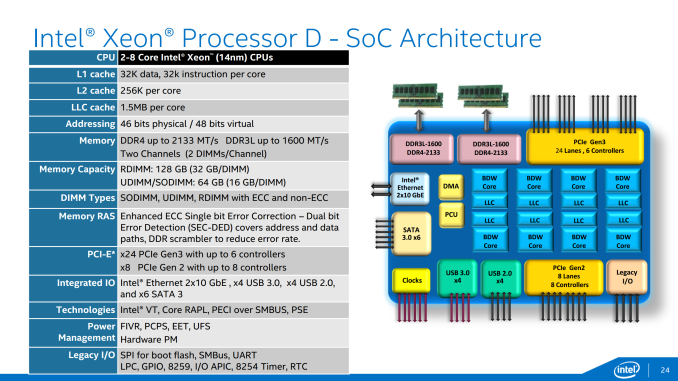
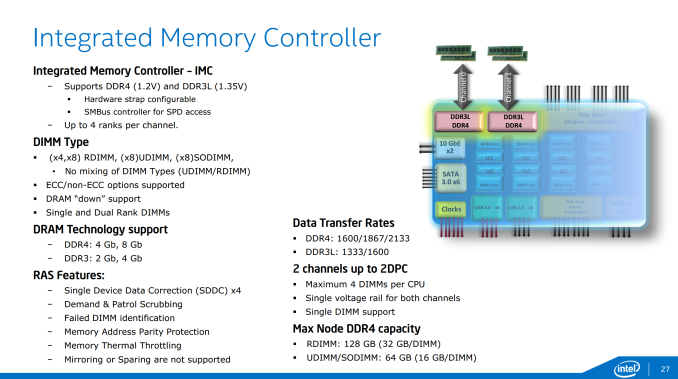
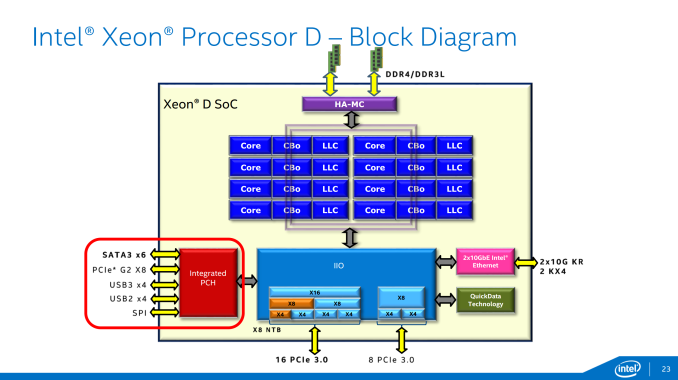
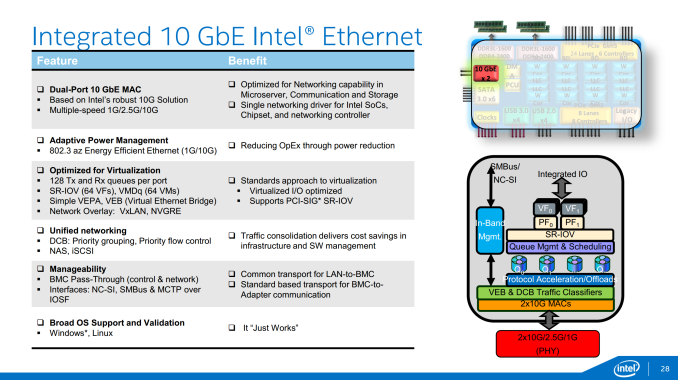
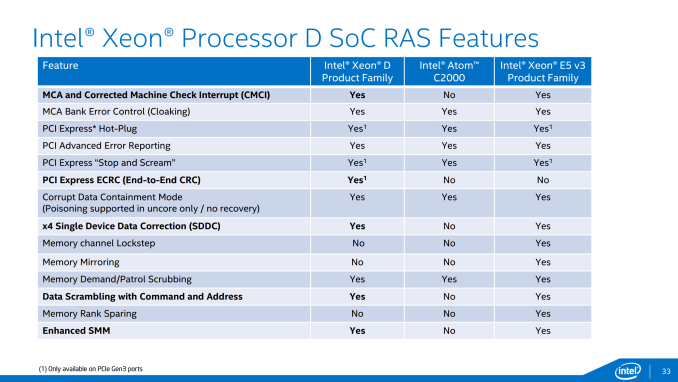
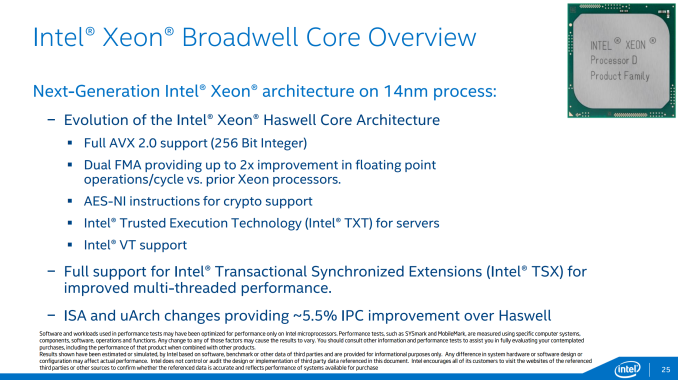

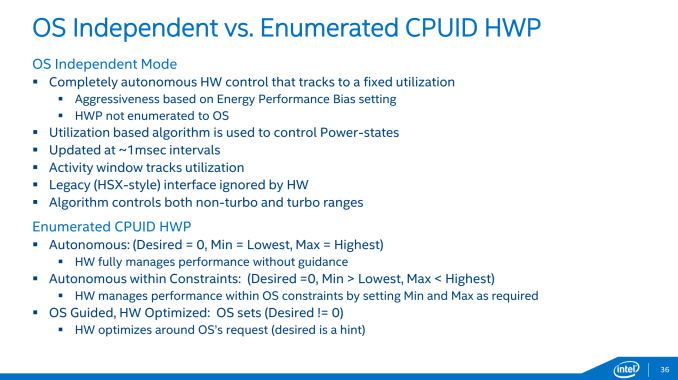
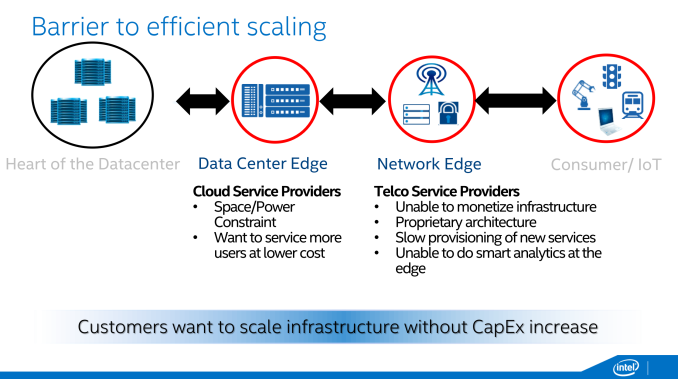

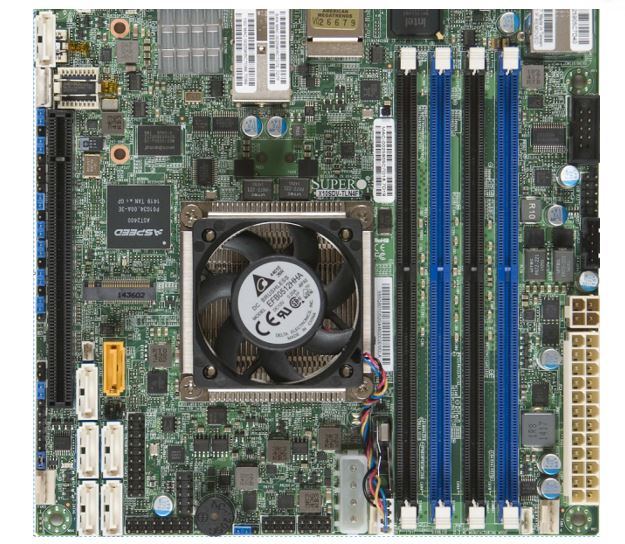
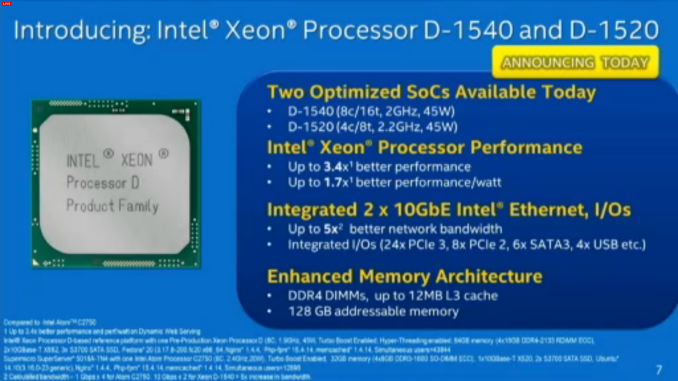
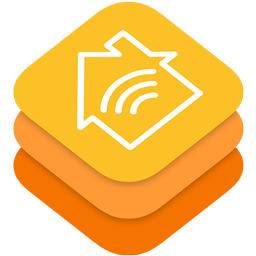
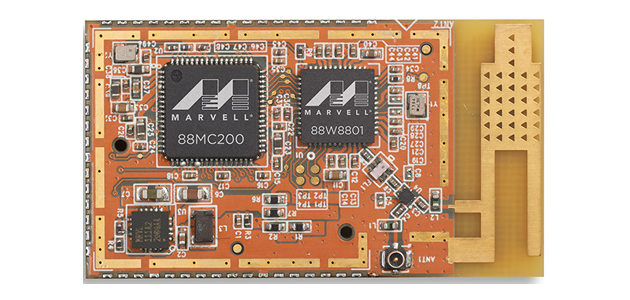
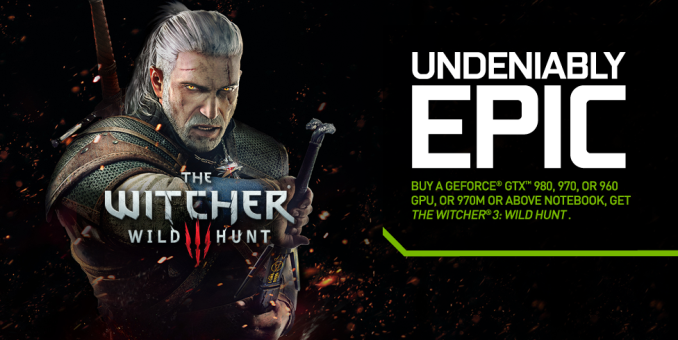
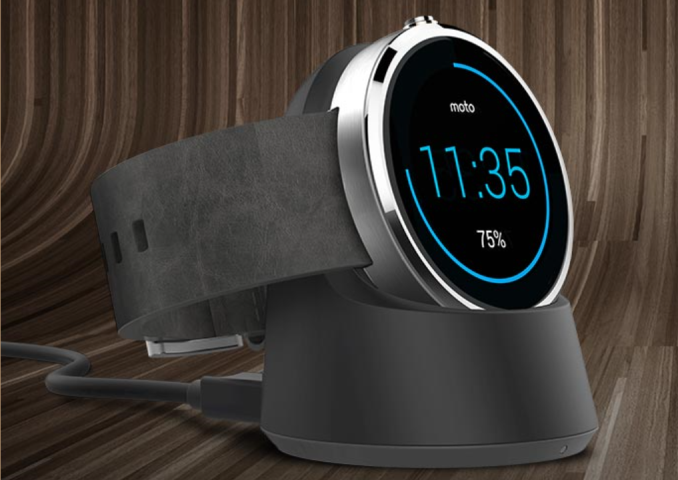




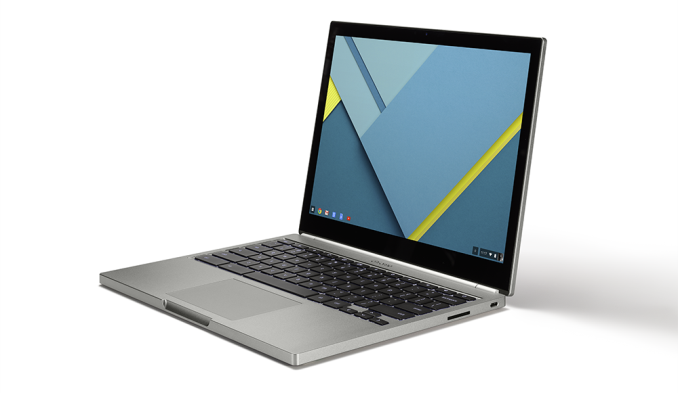
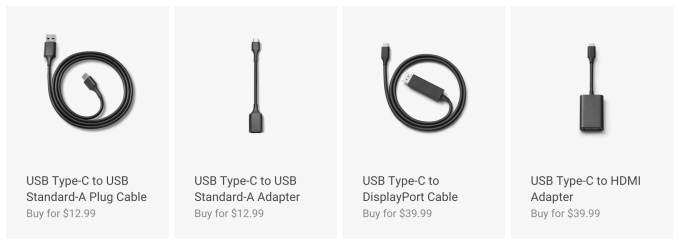
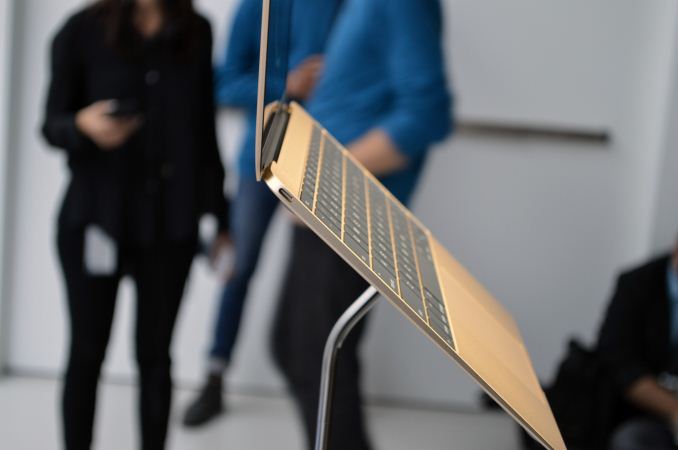
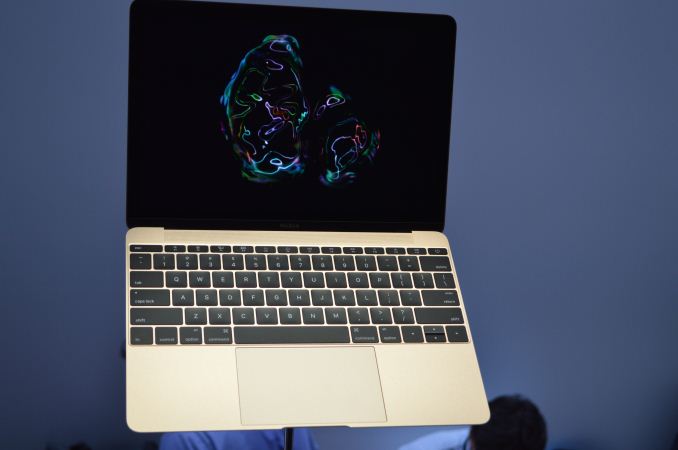

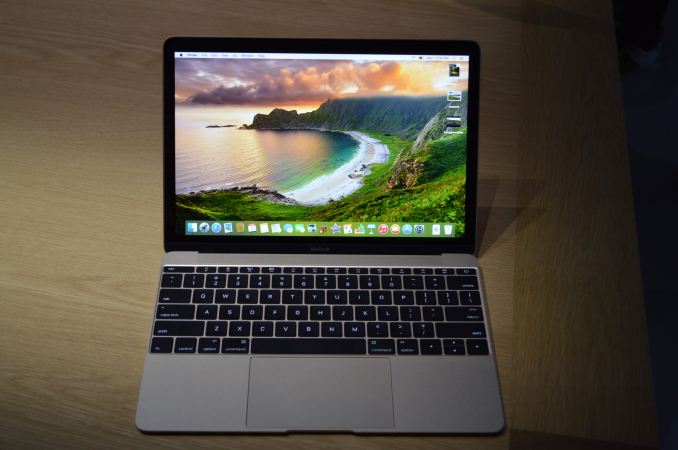
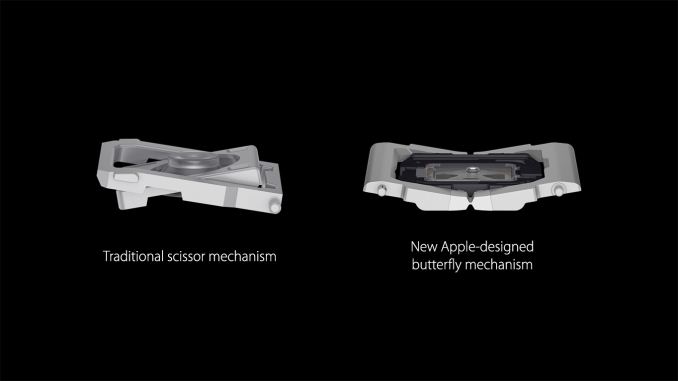
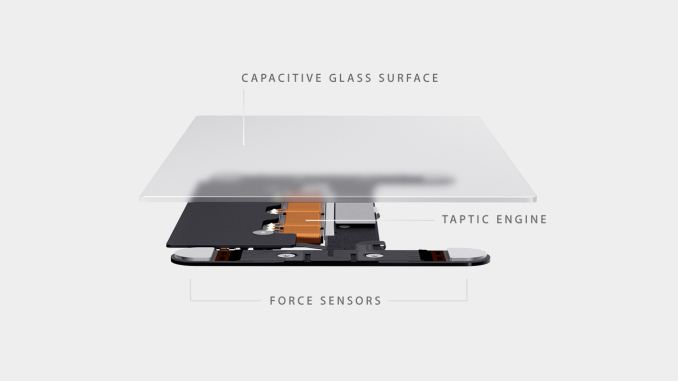
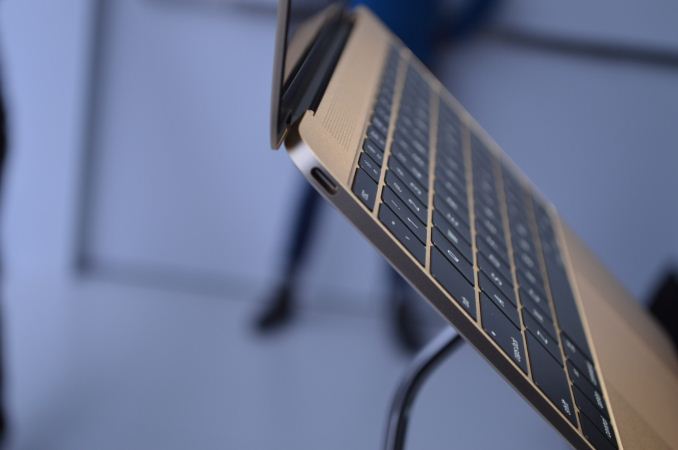
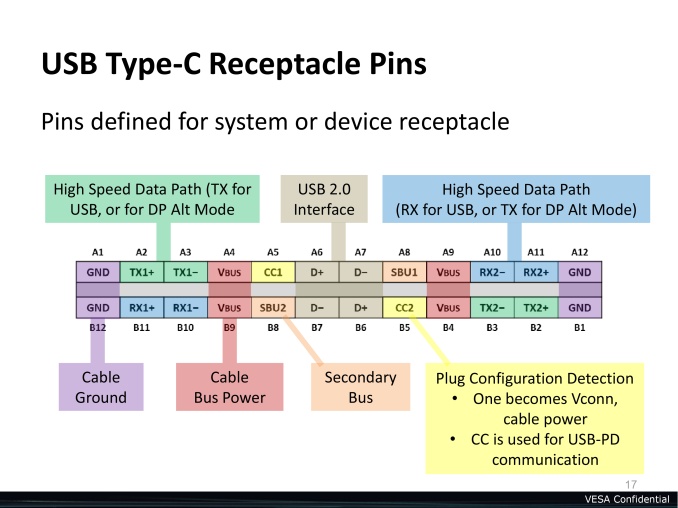
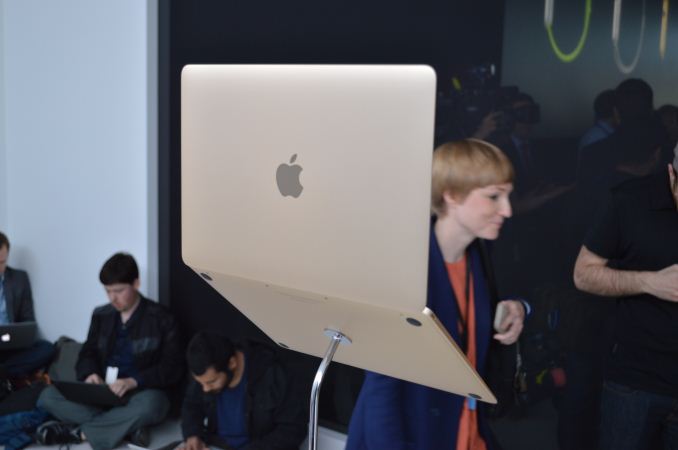






















Bookmarks